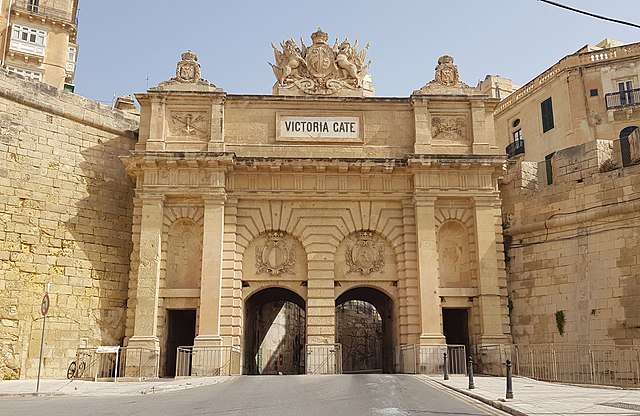By the time Britain pulled out of Malta in 1964 after 150 years of rule, their influence was everywhere, from red letter boxes and jars of Marmite to driving on the left and, of course, the widespread use of English in everyday life. Despite becoming a republic in 1974, the are still part of the Commonwealth, with British influences remaining, a warm relationship still in place between both countries, and a large community of British expats living in Malta.
Visitors unaccustomed to the might recoil in horror at seeing Maltese spreading black protein spread on their toast, and wonder about the red phone booths. Let’s then take a look at five iconic influences that the left on Malta, starting with the language.
1. If it’s not spitchered…

What language do they speak in Malta is a commonly asked question by would-be visitors. Malti – the only official Semitic language of the – is one of the archipelago’s official languages. Courtesy of , the other official language is English. Today, around 88% of speak English fluently, a significant number considering Maltese make up 95% of Malta’s population of 493,000.
Italian was the official language of Malta until 1934 before the country officially ditched it for Malti and English. meant the introduction of English into the education and government system. English is the written form of legal documents, and is a mandatory subject at schools.
With cultural influences being a two-way street, a word of Maltese naval slang from the early 1900s made its way into the Oxford dictionary. Spitchered – meaning ruined, broken or done for – came from the Maltese word spiċċa, which is the equivalent of finished.
During , the Axis forces tried their best to apply the term spitchered to Malta with devastating bombing raids by the Luftwaffe. The country held firm, and so in the main, did British-built architecture, our next topic.
2. Built in Malta, inspired by Britain

When the was in its pomp, one method it used to stamp its authority on colonised countries from Afghanistan to Zimbabwe (then Rhodesia) was via its architecture. The same applies to Malta, where you can see on many architectural structures.
As you enter Valletta, you’ll pass through the imposing double-arches of Victoria Gate. Built by the British and designed by Maltese architect Emanuele Luigi Galizia, the city gate opened to the public in 1885. The gate’s two arches feature the coats of arms of Malta and Valletta, with the British coat of arms topping the structure. Its name is in honor of Queen Victoria.
Another Royal, Dowager Queen Adelaide – who ruled over the UK and Hanover – noticed no Anglican places of worship on a visit to Malta in the 19th century and promptly commissioned a cathedral. The result was ‘s Pro-Cathedral, its soaring dome dominating the Valletta skyline to this day. Genealogist and historical researcher Paul Dixon took to Twitter with a photo of the cathedral’s columned entrance:

The British also built Hotel Phoenicia where, as a princess, Queen Elizabeth stayed when she first visited Malta. Built by Lord and Lady Strickland and designed by Scottish architect William Binnie, the Phoenicia is Malta’s first five-star hotel. The beautifully landscaped 7.5-acre bastion gardens are typically British and designed in the Art Deco style.
Villa Guardamangia, ‘s former royal dwelling while in Malta, opened to the public for the first time in December ahead of its planned restoration. A classic Baroque palace by the sea, Villa Guardamangia is the only property outside of the UK where the royal family has lived. Upon restoration to its former glory, the villa will be a must-see for tourists with an interest in the and Malta’s colonial past.
3. George’s Cross

Malta’s flag represents one of the few former colonies of Britain that still displays a link to their former overlords on their national colours. The islands were a vital strategic staging point for during both WWI and WWII, earning it the nickname Nurse of the Mediterranean. awarded the to Malta in 1943 for the citizens’ bravery in the ver since, an image of the medal has appeared on the .
Broadcaster, journalist and Doctor Of Philosophy Charles Xuereb, however, believes the government should replace the with the Maltese Cross, which is more alligned to contemporary on everything from Malta’s Euro coinage to the national airline’s logo. The , Xuereb told THINK magazine, “is a medal of courage, but a medal is for a museum.”
4. Little splashes of red

Malta’s red post boxes are the same as their counterparts in the UK. Just like in London, tourists love to pose beside them for selfies. The same goes for Malta’s red telephone booths, signs of Empire also still found in Bermuda and Gibraltar. Designer Sir Giles Gilbert Scott wanted the phone boxes in a tone of mild steel. The British Post Office, however, plumped for red, with the argument the colour was easy to spot, especially in case of emergencies. As in the UK, book lovers have turned some of Malta’s telephone boxes into outdoor libraries. As Malta’s yellow pages revealed by sharing a photo of an example beside the Mosta Dome on Instagram, others remain just as the Brits intended them to:

With Malta’s palette being blue, yellow, and brown, the little splashes of red stick out a mile, so they’re easy to find.
5. The ‘right’ side of the road

and including Australia, India, and drive on the left-hand side of the road. Just like its Commonwealth counterparts, the former Malta drives on the left side of the road. This is where, however, the similarities end. While British drivers in the main are known to be courteous, the Maltese themselves confess to being bad drivers. With a population of 493,000 and around 365,000 registered vehicles on the road, you don’t have to drive that long to find out for yourself!
